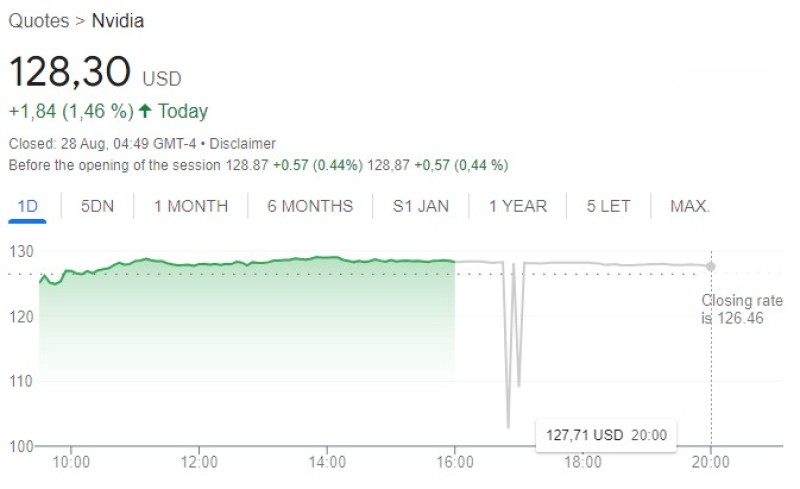Nvidia (NVDA) faces high expectations as it prepares to report Q2 earnings. Morgan Stanley suggests the AI chipmaker must forecast significant revenue growth to maintain investor confidence.
Can NVDA Stock Rally Again on Earnings?
Nvidia (NVDA) is once again in the spotlight as it prepares to report its fiscal 2025 second-quarter earnings. Following a series of explosive earnings reports this year, market participants are keen to see if the AI chipmaker can continue its upward momentum. The company, which has been at the forefront of the AI revolution, has already seen its stock soar on the back of strong earnings, and investors are hoping for a repeat performance.
Earlier this year, Nvidia's stock jumped more than 9% in May following a blowout earnings report that included record revenue and profit, as well as the announcement of a 10-for-1 stock split. The momentum continued with a 16% surge in a single day after the fiscal 2024 fourth-quarter results, adding a record $272 billion to Nvidia’s market cap. However, the stock’s performance hasn't been without challenges, as evidenced by a significant drop in November 2023 when concerns over restrictions on semiconductor exports to China overshadowed otherwise strong earnings.

NVDA Stock Faces Recent Challenges
Despite its strong performance in previous quarters, NVDA stock has encountered headwinds in recent months. A broad rotation out of mega-cap tech stocks, driven by expectations of lower interest rates, led to a 25% decline in Nvidia's stock through July and early August. Additionally, concerns about excessive spending on AI infrastructure have further pressured tech stocks, including Nvidia, as Wall Street's AI optimism has shown signs of fraying.
Another challenge for Nvidia came from reports suggesting potential delays in its next-generation Blackwell chip due to design flaws. This news initially caused a sharp decline in the stock, but investors quickly bought the dip, leading to a partial recovery.
Morgan Stanley's View on NVDA Revenue Expectations
Morgan Stanley analysts have weighed in on the current situation, suggesting that Wall Street may have overreacted to the news of Blackwell chip delays. According to the analysts, these delays are unlikely to affect the overall rollout timeline or have a significant impact on Nvidia's quarterly results. They also believe that Nvidia's strong demand for the Blackwell system, coupled with older product lines filling in supply gaps, will help the company weather any short-term challenges.
However, Morgan Stanley has also highlighted the risk of high investor expectations. The firm believes that to maintain investor confidence, Nvidia will need to forecast fiscal third-quarter revenue guidance significantly higher than current consensus estimates. Specifically, they suggest that guidance in the $33-34 billion range is necessary for the stock to remain stable.
NVDA's Path Forward Amid High Expectations
Meeting these high expectations will be a challenge for Nvidia. Analysts are currently expecting the company to report fiscal second-quarter revenue of $28.84 billion, which would represent an 11% increase from the first quarter. To achieve the high end of the revenue guidance range suggested by Morgan Stanley, Nvidia would need to see a quarter-over-quarter growth of 18%.
As the company prepares to report its earnings, all eyes will be on whether Nvidia can meet or exceed these lofty expectations. With the AI chipmaker playing a central role in the ongoing AI revolution, its performance in the coming quarters will be closely watched by investors and analysts alike.
Conclusion
Nvidia has proven its ability to deliver explosive earnings and drive significant stock gains, but the stakes are higher than ever. As the company faces growing investor expectations and potential challenges with its next-generation products, its upcoming earnings report will be a critical test. Whether NVDA can continue its impressive run or face further setbacks will depend largely on its ability to meet or exceed the revenue targets set by analysts and market participants. Investors will be watching closely as Nvidia navigates this high-stakes environment.
 Saad Ullah
Saad Ullah

 Saad Ullah
Saad Ullah


